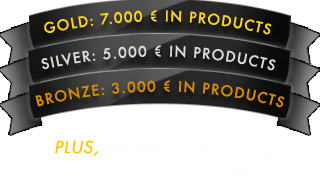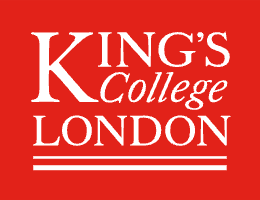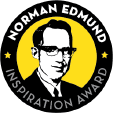

The Edmund Optics Educational Award is an initiative to support outstanding undergraduate and graduate optics programs in science, technology, engineering, and mathematics at non-profit colleges and universities.


 Gold America-$10,000 in Products
Gold America-$10,000 in Products
Instituto Nacional de Pesquisas Espaciai, Brazil, submitted by Danilo Almeida Machado
For a Telecentric optical system developed for rocket injector spray analysis. The modified commercial system provided high-resolution images, facilitating the investigation of spray dynamics from the pressure swirl injector.
The integrated optical system and spray physics analysis allows a thorough characterization for cold tests of combustion injectors. The system innovates by analyzing microscopic and macroscopic spray features simultaneously, including droplet size, liquid film instability wave length, droplet velocity, spray cone angle, and breakup length. Leveraging TitanTL telecentric optics provided a cost-effective and simple-to-operate solution.
 Gold Europe- €7,000 in Products
Gold Europe- €7,000 in Products
University of Twente, Netherlands, submitted by Jelle Schoppink
For laser-induced cavitation in a microfluidic channel for fast jet generation. The thin jet is fast enough to penetrate the skin and therefore deliver medication without a needle.
Within our project we aim to deliver medication without the use of needles. This would reduce waste (44 million needles a day, even before covid vaccinations), help people with fear of needles to get their vaccination or other injection, and would avoid needle-stick incidents. Although needle-free jet injection has already been there since the 1960s, there have been various problems, like splash-back of blood (resulting in HIV outbreaks), bruising, and lack of injection control. Therefore, needle-free jet injection is not used on a large scale.
 Silver Americas- $7,500 in Products
Silver Americas- $7,500 in Products
Centro Universitario de los Lagos, Mexico, submitted by Samuel Mardoqueo Afanador Delgado
For a project using Z-scan, to identify the non-linear optical properties of the genomic DNA of healthy and breast cancer cells, to make an early diagnosis in patients with this type of disease.
The annual mortality from breast cancer is 458,000 people and 1.38 million new cases. In Mexico, for every 100,000 women aged 20 years or older, 35.24 new cases are reported. Early diagnosis is the key to rapid and effective treatment to reduce the mortality rate and improve quality of life. Current diagnostic methods are invasive, as they are usually traumatic, dangerous and expensive for the patient. Taking advantage of the dynamics of the genomic DNA of cells and knowing that this dynamic is altered in cancer cells, differential patterns can be found in breast cells, through the analysis of the nonlinear optical properties of the genomic DNA analyzed with Z-scan, which would accurately identify a cancer cell in the breast tissue, making this optical method a non-invasive, reliable and accessible diagnostic tool for cancer.
 Silver Europe- €5,000 In Products
Silver Europe- €5,000 In Products
Kings College London, United Kingdom, submitted by Shiyue Liu
For developing a unified FTIR/Raman and mass spectrometry imaging instrument for the multidimensional analysis of molecules in triple negative breast cancer tissue samples.
Triple-negative breast cancer (TNBC) stands out as a particularly lethal disease, characterized by its high mortality rates. The current standard-of-care treatment for TNBC involves neoadjuvant chemotherapy; however, a substantial proportion of patients do not respond to this therapy. A key factor driving this aggressive disease is the high intra/intertumoral and interpatient heterogeneity. To tackle this challenge, optical design is used to create a FTIR-Raman-MS instrument, incorporating precision components from Edmund Optics. This groundbreaking instrument enables multidimensional analysis of molecular constituents within TNBC tissue samples. FTIR and Raman spectroscopy are complimentary, non-destructive, and fingerprint techniques, which provide structural and conformational molecular differences. MS can identify individual metabolites in complex tissue matrices accurately. This transformative imaging tool is poised to revolutionize the understanding of TNBC and its progression. It can help to identify novel therapeutic targets.
 Bronze Americas- $5,000 in Products
Bronze Americas- $5,000 in Products
University of Arizona, United States, submitted by Dilara Long
For comparing structural and functional features of the uterotubal junction in women with and without endometriosis using optical coherence tomography imaging, and to develop a miniature minimally invasive endoscope for endometriosis diagnosis.
Currently, there is no reliable non-invasive imaging method capable of detecting early-stage endometriosis or providing a thorough assessment of the structural and functional integrity of the proximal fallopian tubes. Definitive diagnosis requires laparoscopic surgery, which is nonspecific, cannot assess the UTJ, and poses risks that make repeat surveillance difficult to justify. This proposes a novel approach using optical coherence tomography (OCT), a high- resolution imaging technique that enables visualization of microstructural features of small (<1 mm) luminal organs up to 3 mm below the surface. An OCT endoscope designed specifically for the UTJ could provide a non- destructive method to identify structural biomarkers and functional impairments related to EM, including subfertility. Our findings will have a significant impact on EM diagnosis and understanding, and our development of a low-cost, high-resolution OCT endoscope will address the unmet clinical need for a more specific, less invasive imaging procedure for endometriosis diagnosis.
 Bronze Europe- €3,000 in Products
Bronze Europe- €3,000 in Products
New York University Abu Dhabi, United Arab Emirates, submitted by Jeremy Teo
For the development of a miniaturized brightfield microscopy system for evaluating 3D cell culture system, to be used for Space Biology research.
Using focus tunable lens and a miniaturized custom bright field microscopy system, there is an ability to image 3D cell culture systems in brightfield for space biology research, despite the spatial and weight constraints of simulated microgravity or autonomous experiments in real microgravity. The feasibility of tissue engineering in space is being investigated, which is a vital step in providing biomedical support for long distance, long duration, space flight beyond Low Earth Orbit (LEO) and inhabitation of planets. Beyond LEO, the possibility of emergency retrieval of compromised individuals is close to zero and the possibility of tissue engineering replacement organs or applying current regenerative medicine strategies as space therapeutics holds exciting promise. With the award, the intent is to push to provide fluorescence capabilities.

The Norman Edmund Inspiration Award is awarded to the program that best embodies the legacy of Edmund Optics’ founder Norman Edmund.

University of Arizona, United States, submitted by Dilara Long
For aiming to compare structural and functional features of the uterotubal junction in women with and without endometriosis using optical coherence tomography imaging, and to develop a miniature minimally invasive endoscope for endometriosis diagnosis.
This research project has the potential to bridge the gap between unmet clinical needs and state-of-the art, non-invasive optical technology, particularly in women's health applications. In the setting of endometriosis, minimally invasive optical technologies have the potential to reduce costs and complications, inform diagnosis and staging, monitor disease progression, and facilitate personalized treatment, ultimately reducing chronic pain, infertility, and even the risk of some cancers. It is the intent to show young students that their aptitude or interest in optical sciences can be harnessed toward improving health and wellness, particularly for marginalized populations.
University of Illinois at Urbana-Champaign, United States, submitted by Peter Dragic
University of Arizona, United States, submitted by Dilara Long
Instituto Nacional de Pesquisas Espaciai, Brazil, submitted by Danilo Almeida Machado
CREOL, College of Optics and Photonics, United States, submitted by Le Mei Wang
Berea College, United States, submitted by Troy Messina
University of Texas- Rio Grande Valley, United States, submitted by Satya Kachiraju
Universite Laval, Canada, submitted by Mireille Quemener
Universidade Federal do Ceará, Brazil, submitted by Filipe Feitosa
Macalester College, United States, submitted by John Cannon
Centro Universitario de los Lagos, Mexico, submitted by Samuel Mardoqueo Afanador Delgado
Universidad de Guadalajara Mexico, submitted by Roger Chiu-Zarate
Wayne State University, United States, submitted by Chenjun Shi
Princeton University, United States, submitted by Yaakov Clenman
Bar-Ilan University, Israel, submitted by Zeev Zalevsky
Kent State University, United States, submitted by Marianne Prevot
University of Twente, Netherlands, submitted by Jelle Schoppink
Paul Scherrer Institute, Switzerland, submitted by Mohammad Sohaib
Kings College London, United Kingdom, submitted by Shiyue Liu
Aarhus University, Denmark, submitted by Dmitry Postnov
New York University Abu Dhabi, United Arab Emirates, submitted by Jeremy Teo
or view regional numbers
QUOTE TOOL
enter stock numbers to begin
Copyright 2023 | Edmund Optics, Ltd Unit 1, Opus Avenue, Nether Poppleton, York, YO26 6BL, UK
California Consumer Privacy Act (CCPA): Do Not Sell or Share My Personal Information
California Transparency in Supply Chains Act